Taiwan, What’s in a Name?
I was going to be in Asia before a conference in Macau and had some time free and wanted to go somewhere nearby where I wouldn’t need a visa and hadn’t yet been. Taiwan fitted the bill. It conjured up images of being fiercely pro-American and anti-Communist, anti-Mainland. I had images of GIs jitterbugging, and handing out nylon stockings and chewing gum to adoring girls and children. I imagined streets strewn with the Stars and Stripes, maybe similar to what I had seen in Bill Clinton-loving Kosovo and Albania.
Taiwan, formerly Formosa, the “beautiful” island, is the island enclave to which Chiang Kai-Shek (CKS)(1887-1975), the nationalist leader of the Kuomitong (KMT), which controlled the Republic of China, retreated to in 1949, along with some two million followers, after being defeated by the Communists led by Mao Ze-dong. CKS believed that in Taiwan the Nationalists would regroup, and, supported by American might, they would be able to retake China. But the US had no appetite for another major war, were disgruntled with the Nationalists, who were syphoning much of the billions of dollars of aid to buy up properties in Brazil and even New York, and so, CKS remained in Taiwan, and, with solid American support there, became President in 1950 and remained so until his death in 1975. President Truman sent the Seventh Fleet to patrol the Taiwan Strait in the 1950s, but major conflict was avoided.
A dictatorship, in the old style, where the Generalissimo controlled media and unions, and his support from the people was cushioned by growing prosperity resulting from rapid industrialisation – in the 1960s and 1970s Taiwan had the world’s fastest growing economy and the hostility to nearby China.
But changes finally came to Taiwan in the 1970s when the US made its peace with China, which was officially admitted to the UN in 1971. Rather than share a seat with Mao, Chiang withdrew. Richard Nixon made his well-publicised visit to Beijing in 1972, panda diplomacy to the US started, and in 1978 President Carter switched recognition to China as the US tried to outflank the USSR. However, the US still supplies Taiwan with weapons, but there are no US soldiers stationed here.
With the Cold War and conflicts in Korea and Vietnam, the US needed a staunch ally and was ready to help repression of left-wing dissidents. But the winds of change were coming, and during the government of Chiang’s son, Chiang Ching-kuo, from 1978 to 1988, there were various political reforms, and a growth of informal opposition. Martial law was finally lifted in 1987, and press restrictions removed in 1988. Official hostility to China formally ceased in 1991, and the first free elections were won by KMT incumbent Lee Teng-hui. In 2000 there was finally a change of government as the KMT lost to Chen Shui-bian of the Democratic Progressive Party (DPP), which favoured seeking an independent seat for Taiwan at the UN. The DPP won again in 2004, but lost in 2008, and Chen Shui-bian was imprisoned for corruption immediately after stepping down. However, with a stagnating economy President Ma is very unpopular, with an approval rating of only 13%. Basically, the KMT, the blues, which originally came from the mainland, sees some kind of eventual reintegration with the Mainland, whereas the DPP, the greens, but with no link to the environmental greens, wants to follow a separate path.
We are in a country where ambiguity seems to be the name of the game. Are we in China? Well, yes. Indeed, let’s examine the name game. Maps and guides call the country “Taiwan”; in the Olympics it competes as “Chinese Taipei”; but it officially calls itself the “Republic of China”. Now, the Communist Party of China sees China as one country, including the “Special Administrative Districts” of Hong Kong and Macau, but also its “renegade province”, Taiwan, which will eventually return to the fold. But as only one country can call itself “China” and today Taiwan is only recognized as China by small insignificant countries such as Belize, Burkina Faso, Haiti, Paraguay and the Vatican Republic, the “People’s Republic of China”, “Mainland” or “Communist” China is relatively happy. Taiwan calls itself “China” and is therefore part of “China”. But, if Taiwan were to change its name, and call itself, for example the “Republic of Taiwan”, thereby asserting its independence, and saying that is another place and not China, Mainland China would be none too happy and would possibly threaten to invade. The status quo satisfies the great majority of Taiwanese, China and the rest of the world. Taiwan no longer has the ambition to retake China. And China now follows the openly capitalist system long embraced by Taiwan. And don’t we all want money. As Deng Xiao-ping said: “To get rich is glorious”. Taiwan heavily invests in China. Taste in clothes, popular music, television programmes are all shared. Conflict is bad for trade. The situation could not be more peaceful. At least for the moment…
I visit the superb Chiang Kai-Shek Memorial Hall, completed a few years after his death in 1975, and see his Cadillacs, pictures of his receiving such noted visitors as General Noriega of Nicaragua, the Shah of Iran and Richard Nixon, and pay my reverences to the huge bronze statue on the third floor. But personality cult worship does not sit easily in a democracy, and for the last 16 years Taiwan has been a flourishing democracy. I then read that the statue of CKS has been withdrawn from the central courtyard of the National Cheng Kung University in Tainan and placed in the storeroom. Less than a kilometer from the CKS Memorial Hall I visit the 2/28 Peace Park Museum, which commemorates the thousands killed in the massacre carried out by the central nationalist government under Chiang Kai-shek in Beijing after the 2/28 incident in 1947 and the consequent abduction and disappearance of members of the intellectual elite – doctors, teachers, businessmen – the “White Terror” which continued in independent Taiwan, with the disappearance of dissidents right up until the dictatorship formally ended in 1996.
Taiwan was ruled by the Japanese from 1898 to the end of World War II, in 1945. During this time the Qing dynasty in China had been overthrown by revolutionaries led by Sun Yat-sen (1866-1925), still revered both in mainland China and Taiwan. The Chinese Nationalist Party, the Kuomintang (KMT), ruled China off and on for the next 20 years, and from the 1920s was led by Generalissmo Chiang Kai-shek. The Nationalists had been involved in a fierce battle with the Communists, put on hold only to fight against the Japanese in WWII. After the war the Taiwanese, who had prospered during the Japanese occupation, expected greater freedoms but resented the centralization, venality and corrupt rule of governor Chen Li, and things came to a head on 27 February 1947 when a local female seller of smuggled cigarettes had her product confiscated and was roughed up by officials. This was the straw that broke the camel’s back and led to mass protests, strikes, riots, and a government crackdown that led to up to 28,000 deaths.
Much has been written on CKS and Madame Chiang, Soong May-ling (1898-2003), his American educated wife, advisor and interpreter, who raised much support and finance from the US. Madame Chiang’s heyday came during World War II, when she went to the U.S. as her husband’s spokesperson and made a rousing address to the U.S. Congress appealing for help against the Japanese. The Americans took to her – she was featured three times on the cover of Time – and she played a major role in nationalist politics, running Chiang’s air force at one point. But the “Dragon Lady” was often regarded as arrogant and an apologist for the authoritarian ways of the KMT regime. After her husband’s death in 1975, she moved to the U.S. and a life outside of the political spotlight.
I was worried that I would not be allowed into China if I had stamps from Taiwan on my passport. But this is not Israel and Palestine; Serbia and Kosovo; or North and South Korea. There is growing bilateral investment and trade, and Taipei is full of Chinese tourists, many of them on package tours, and they all visit the National Palace Museum, containing many of the Qing riches Chiang brought from Beijing, and the beautiful gardens of the CKS residence, complete with the Victory Chapel, where both Eisenhower and Nixon worshipped. Madame Chiang was a firm Methodist, and CKS switched from Buddhism in order to marry Madame.
In Taipei I find none of the tension I found in Seoul, where South Korea is still at war with North Korea and where my hotel room was equipped with an evacuation kit. Only on one television channel do I find a programme on the real stories behind the Chinese news, unveiling corruption, crime and malpractice.
In the Taipei Fine Arts Museum the Taipei 2013 Biennal’s main theme is that of the Apocalypse of the world as we know it, but I find few signs of that on the streets of Taipei. The night markets are full of courting couples, families, and friends scoffing fishballs and fried squid; in this mild climate the many parks are full of winter flowers; near my hotel in the old district of Wanhua the local youth rent fancy dress costumes for the weekend parties; many of the shrines are full as the faithful make their prayers and promises for the next lunar year, beginning on 10 February.
I take the metro the end of the Danshui line and visit the Fort San Domingo, originally built by the Spanish in 1628 and the occupied by the Dutch. When China was opened up to foreign trade in 1860 after the Treaty of Beijing opened Chinese ports up to foreign trade, with the demands of the British to sell opium to China, Danshui boomed, and Britain opened up a consulate and customs office, now a museum with a display of Victorian furniture, importing tea from China and exporting opium. I see the statue of George Mackay (1844-1901), Canadian Presbyterian missionary, doctor, and teacher, the Presbyterian church on the site of the original church he had built in 1882, the free dispensary, and Oxford College, the boys school he set up, now on the campus of Aletheia University. He is affectionately remembered, and today there is a Mackay Hospital in Taipei.
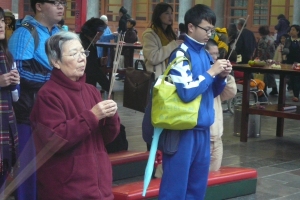
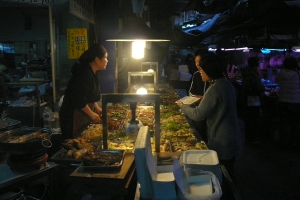
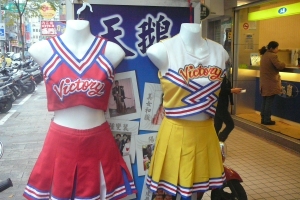
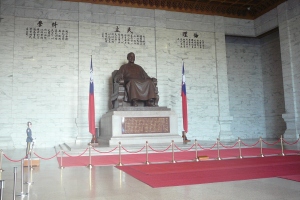
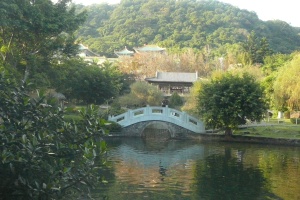
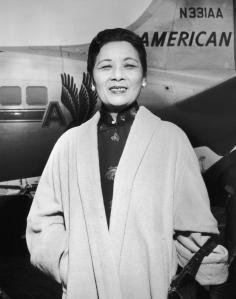
Thank you, John. A very good historical and political explanation. It gave me a desire to go to Taiwan soon. Have a nice trip.
Julieta:
Nice place, you’d like it!
John
Nice, John! That has filled in some of the holes in my understanding!
[…] globe and ponder on how much we don’t know what we don’t know. This first text is about Taiwan. Worth reading and […]
very nice, indeed, sir john!
You are tempting all of us to go back to the not Far anymore East.
Hey, who are you with your funny name, NotskylarkSara? But I agree with you – I long to return to the East!
My Dear Professor, as always a pleasure to read. A real lesson in Historic and Contemporary Eastern-Western relations! Thank you for sharing…
Como sempre, estamos diante de um escritor. Gênero literatura de viagem. Melhor: literatura. Beijos. Leda.
David Soares
Hi John,
As usual, a very interesting and well informed, well balanced account of a controversial reality. I particularly enjoyed your mention that the CKS statue has been defenestrated to the storeroom of the National Cheng Kun University.
Have a fruitful and pleasant time during the remaining portion of your trip.
Best
John,
not only is the literature good here, but the photographs, as well!
thank you and have a wonderful continuation of it…
gisele
Very nice, John!
Professor John, thanks for sharing this vivid text with us . Reading it is like to be present in all these places feeling the vital flow of life. After all, what in the name that is not able to capture its essence is revealed by the sensitivity of a generous look.
John, visitei Taiwan in 1986… Loved the small temples, no meio daquelas feiras livres. Lembro que almocei mto bem numa delas. cheers and thanks for ur ‘news from the front’.
How awesome, John! xoxo ❤